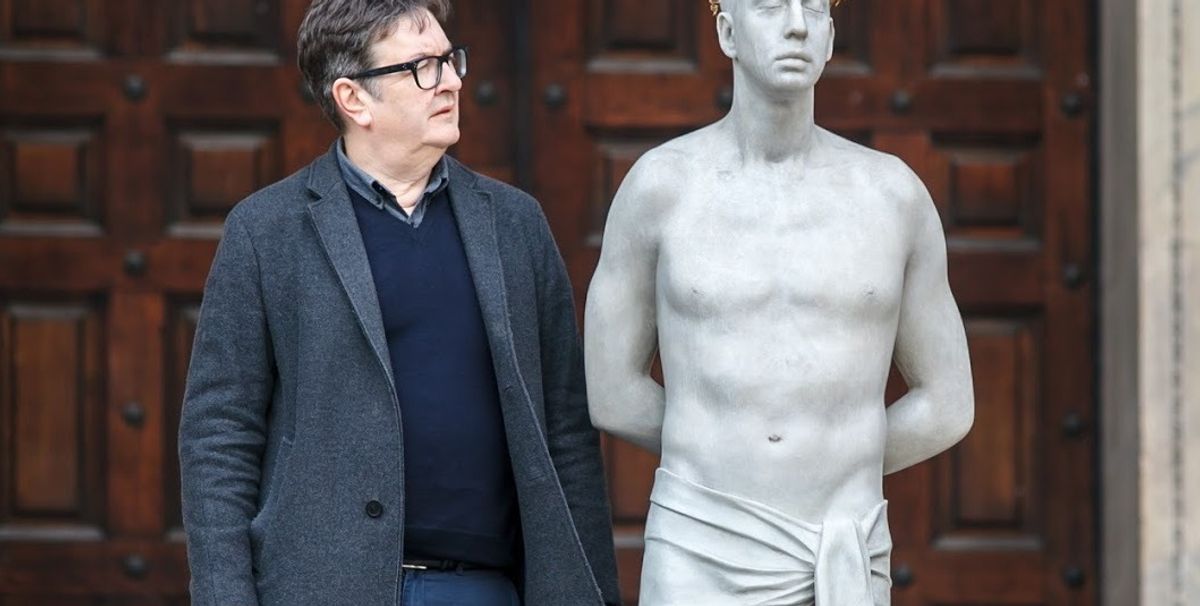Mark Wallinger’s life-sized sculpture of Christ, Ecce Homo, was the first work to be shown on Trafalgar Square’s Fourth Plinth back in 1999. This universal image of human vulnerability—considered by many, including this correspondent, to be one of the finest pieces of public art in recent memory—has found a new home on the steps of St Paul’s Cathedral (until 22 May). It was installed this morning—just in time for Easter—by Wallinger in collaboration with Amnesty International and St Paul’s.
The work depicts Christ brought before the people by Pontius Pilate for judgment, with his hands bound behind his back and wearing a crown of gilded barbed wire. “Christ was a political prisoner who was put before a lynch mob and met with summary justice. That story is relevant for each and every generation,” Wallinger said. “It is for us to respect other people’s beliefs whether we share them or not. It’s an enormous privilege to work with St Paul’s and Amnesty International to shine a light on human rights abuses.”
The Amnesty International director Kate Allen also agreed that “the story of Christ—arrested, tortured and executed for peacefully expressing his opinions and challenging the authorities of the time—still resonates around the world today”. And as such, it chimes with the ongoing work of Amnesty International “to protect individuals whenever justice, fairness, freedom and truth are denied”.
For his part, the chancellor of the cathedral Mark Oakley declared it to be “a very important day for St Paul’s”. He also praised Amnesty for its “history of making sure the world doesn’t snore through abuses of human dignity”. Oakley added: “If it is true that if you’re not at the table then you’re probably on the menu, then we need to make sure that the table is a very large one. I think this statue reminds us that everyone needs to have a place at this table.”



